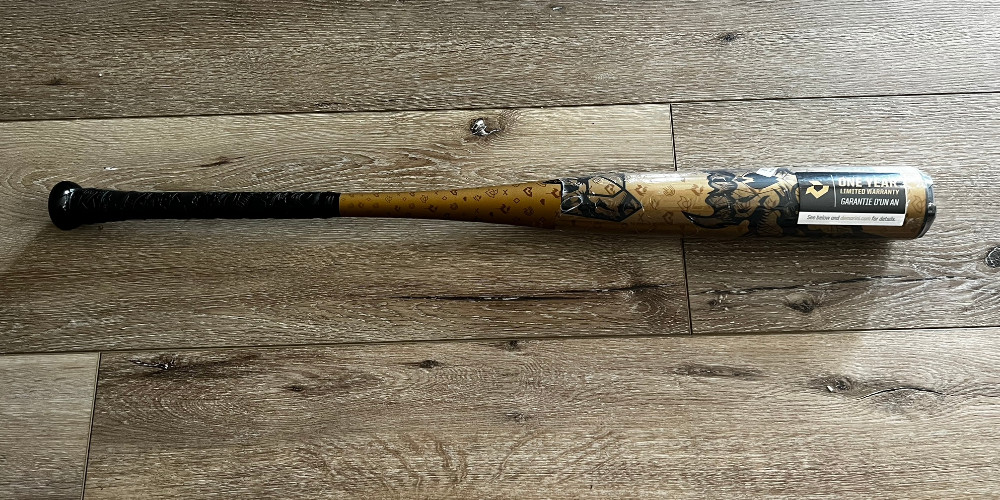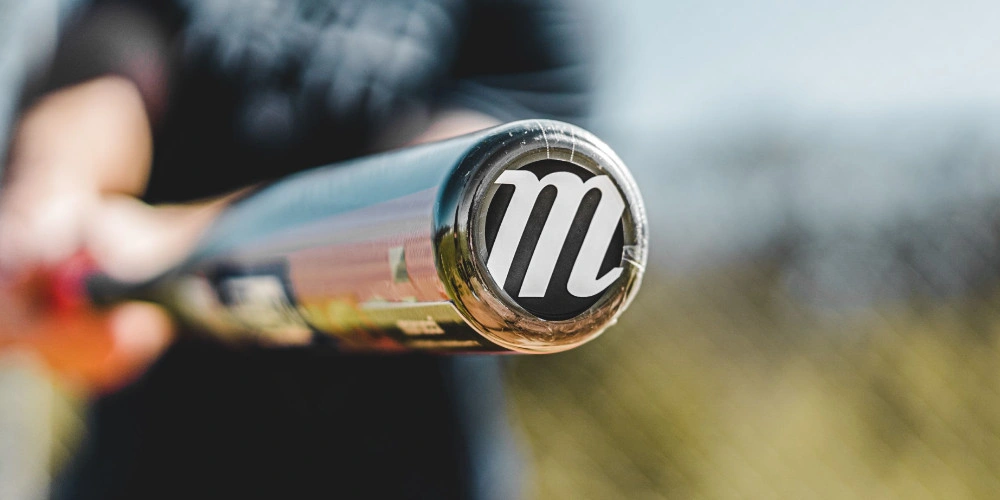Composite vs. Alloy Bats
Metal baseball bats are made from one of two materials: aluminum alloy or composite. And while many prospective metal bat buyers might assume the difference between the two is minimal, both types of material come with distinct pros and cons, which, considering that every hitter’s swing is unique, might either benefit or hinder your performance. Because of this, knowing the difference between composite and alloy baseball bats—and which option is best for you or your kid—is crucial for maximizing performance at the plate.
Composite Bats
Composite bats are often considered better, higher-quality bats than alloy ones. And while this can certainly be true, it isn’t always the case. As with anything, “better” is a subjective term, and will mean something different to each hitter.
The first thing to know about composite bats is that the composite material they’re made with is extremely lightweight compared to aluminum alloy, which translates to composite bats feeling very lightweight, as well. This is a massive benefit for most, since a lightweight feel means increased bat speed, and increased bat speed makes a ball travel further. I wrote “for most” instead of “for all” in that last sentence because stronger, more natural power hitters are often better suited to the power that comes with more weight, which would mean an alloy bat is best. But I’ll get to that in the next section. For now, this is what you need to know: if you’re more of a contact/average oriented hitter, then a composite bat is a good bet to maximize your hitting potential. If you need that extra bit of pop to drive the ball over the fence, then a composite likely could provide that for you. But if you’re already strong enough to send balls over the wall, then alloy might suit you better.
In addition, composite bats are typically made in what’s called a “two-piece” construction; meaning, it’s made from two different materials that are then pieced together. Both of these materials are often composite, but even if this is the case, it’s still considered a two-piece bat. And any two-piece composite bat is going to come with a built-in damper, which combines the bat’s two pieces and serves as a cushion that absorbs vibrations that might otherwise be transferred to a player’s hands. One-piece bats (typically made from alloy) won’t have this same technology, which means you’ll be exposed to more bat vibration and stinging that comes from getting jammed. So if this is something you’re sensitive to, perhaps a composite bat will be a good option for you. Yet, dampers are also prone to breaking, which is one reason why composite bats are generally considered to be more fragile than alloy ones.
Composite bats aren’t good in cold weather. Because composite bats are often made of carbon fiber (a man-made material), they’re much more prone to cracking in cold temperatures than aluminum alloy ones. Especially for lighter bats (-10 or higher), there’s a fair chance they won’t last long if you or your kid is consistently playing in less than 60 degree Fahrenheit weather. If this weather isn’t normal for you during the season, then there’s no need to worry about it. But if you do spend a solid chunk of the season in the cold then keep this in mind prior to buying a composite bat. Luckily, some composite bat manufacturers make heated bat warmers to help protect against their bats breaking in the cold, so if you come from a cold area but are still set on buying composite, then perhaps consider buying one of these warmers, too.

Alloy Bats
Alloy bats are often seen as inferior to composite bats—but this isn’t true. Again, such matters are subjective, and while alloy bats are most likely going to be less expensive than composite ones, they also have many benefits that could fit your needs.
If you consider yourself a power hitter, an alloy bat might be the perfect investment for your home run hitting prowess. Bats made from aluminum alloy are going to feel heavier and much stiffer in your hands than a composite one, which could decrease your bat speed. But if you’re naturally strong then the heavier alloy material is worth it, because natural power translates into alloy bats more than composite ones. All that time spent in the weight room is one reason why you’ll see many collegiate players using alloy bats over composite ones.
Alloy bats also usually come in a one-piece construction, which means there’s no damper that will lessen the bat’s vibration. Due to this, you’re likely going to feel some sting after getting jammed on inside pitches.
Yet, one massive benefit to alloy bats is that you won’t have to worry about them breaking in cold weather. Since alloy a natural material (as opposed to man-made like carbon fiber) it isn’t nearly as susceptible to cold weather as a composite bat. This will save you stress and eliminate the need to buy a warmer for your bat. And cold weather aside, alloy bats are going to be more durable and long-lasting than composite ones. So if you’re looking for something that’s going to last a few seasons, keep alloy in consideration.

How to Choose Between the Two
Now that you know the ins and outs of both composite and alloy bats, let’s talk about which option is right for you. And while I wish I could give you a general recommendation that will be accurate for everyone, that simply isn’t possible when it comes to bat construction. The answer to this question is that it’s the decision should be based on your personal preference, geographic location, hitting style, and price point. If you’re a contact hitter from Arizona who likes a lightweight feel and is okay with spending $400-500 on a new bat, then composite would be a great option for you. If you’re a power hitter from New York who likes the feel of a heavier, end loaded bat in their hands, and is looking for something less expensive, than alloy is right up your alley. Of course, these are just two out of infinite scenarios, so it’s really going to be up to you which bat you’d like to buy.
There are also hybrid bats available, which typically consists of a composite handle and alloy barrel. This is still going to feel heavier, and more end loaded than a fully composite bat, but won’t be as prone to breaking as a composite one, either. It’s sort of a happy medium between alloy and composite, so if a bat made entirely out of those two materials doesn’t sound right for you, then consider buying a hybrid bat.
Conclusion
I’ll leave you with this: if you want to be sure you’re making the right decision about composite vs. alloy bats, it might be a good idea to go into your local sporting goods store, swing a few models of each, and talk to the worker to see whether they have a specific recommendation for you. The swing test is a tried and true way to see what feels best in your hands—which is ultimately the most important factor when buying a bat. When you do make a choice, though, be sure to hop back online and make your purchase on SidelineSwap. The composite and alloy options we have available are going to beat the prices you’ll find in person.

